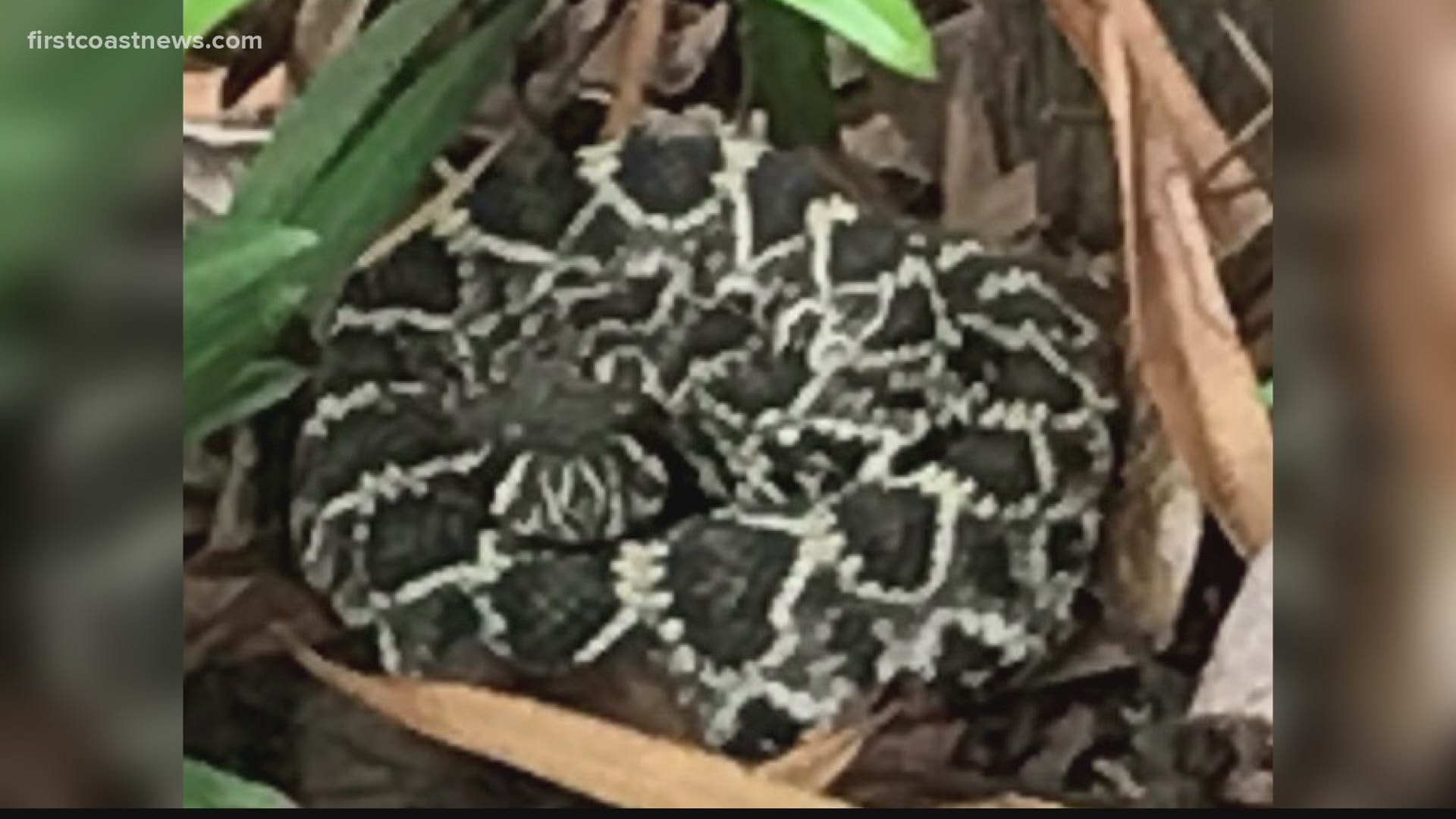TAMPA, Fla. — They're sneaky. They're slithery. And they may just be hiding in your backyard.
Snakes may not be everyone's favorite, but they are part of living in Florida.
The Sunshine State has more than 44 native species of snakes found in every type of habitat imaginable. From mangroves to freshwater wetlands to residential areas, they can be seen just about anywhere.
Snakes actually play an important role in our ecosystem. Many of them eat rodents, whichinsta may spread disease or destroy crops. A lot of non-venomous snakes also eat venomous ones, which is good news for us and for the balance of our ecosystem.
Here's some more good news – only six of Florida's 44 snake species are venomous. That means while they may be creepy, most snakes you come across are harmless.
Venomous snakes
Experts say snake mating season runs throughout the Spring, with some breeds hitting their peak in April.
You may have heard the rhyme “Red touch yellow, kill a fellow. Red touch, black, friend of Jack." FloridaHikes.com says this can be helpful in distinguishing between coral snakes (venomous) and scarlet kingsnakes (non-venomous), but it's not foolproof.
So here's which snakes to look out for.
Dusky Pigmy Rattlesnake

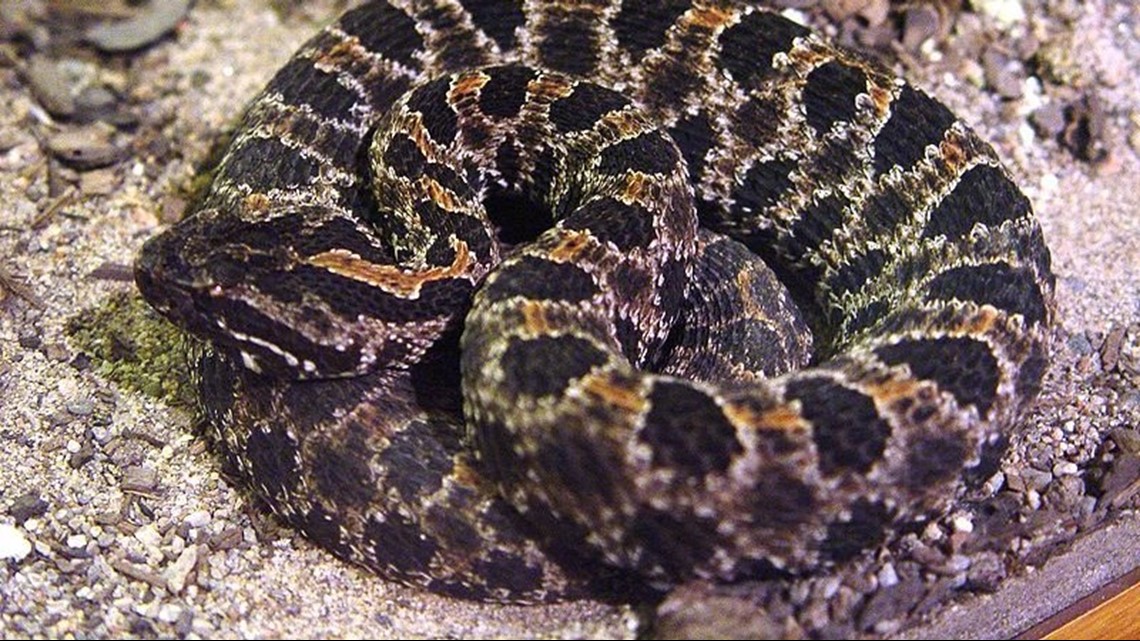
- Small, but fierce
- Typically found in damp, lowland areas
- Small rattle often compared to the sound of a buzzing insect
- Gray, with rounded, dusky spots
Cottonmouth

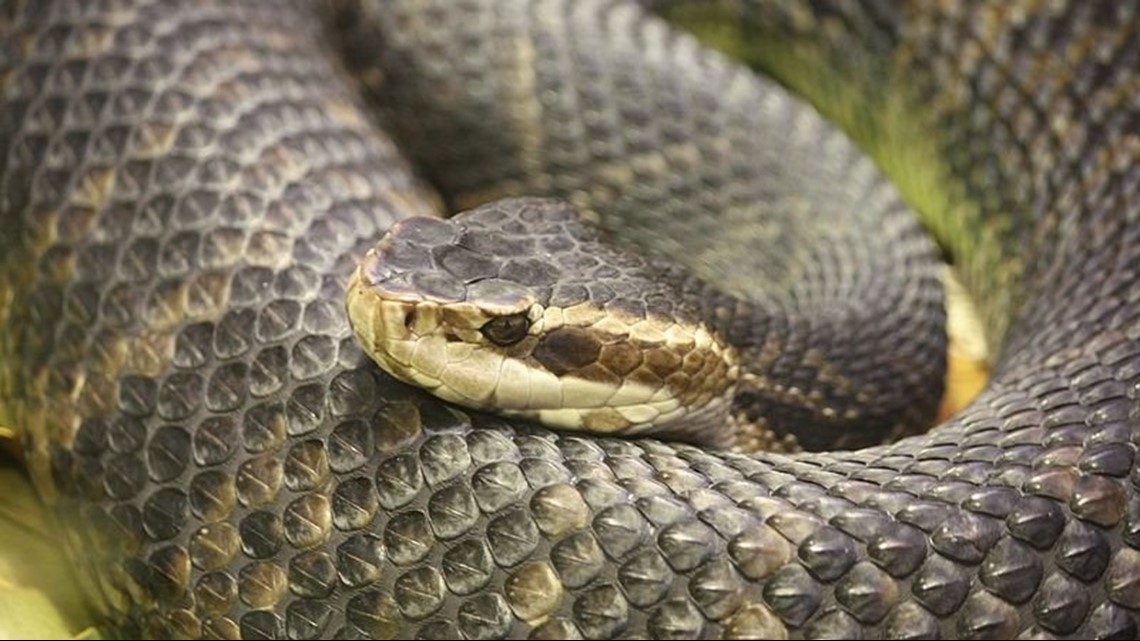
- Also known as water moccasins
- Known for the white color inside their mouths and the white next to their eyes
- Highly aggressive, great swimmers
- Found in swampy areas near water
- Sharply angled head with a "pit" between the eyes and nostrils
Diamondback Rattlesnake

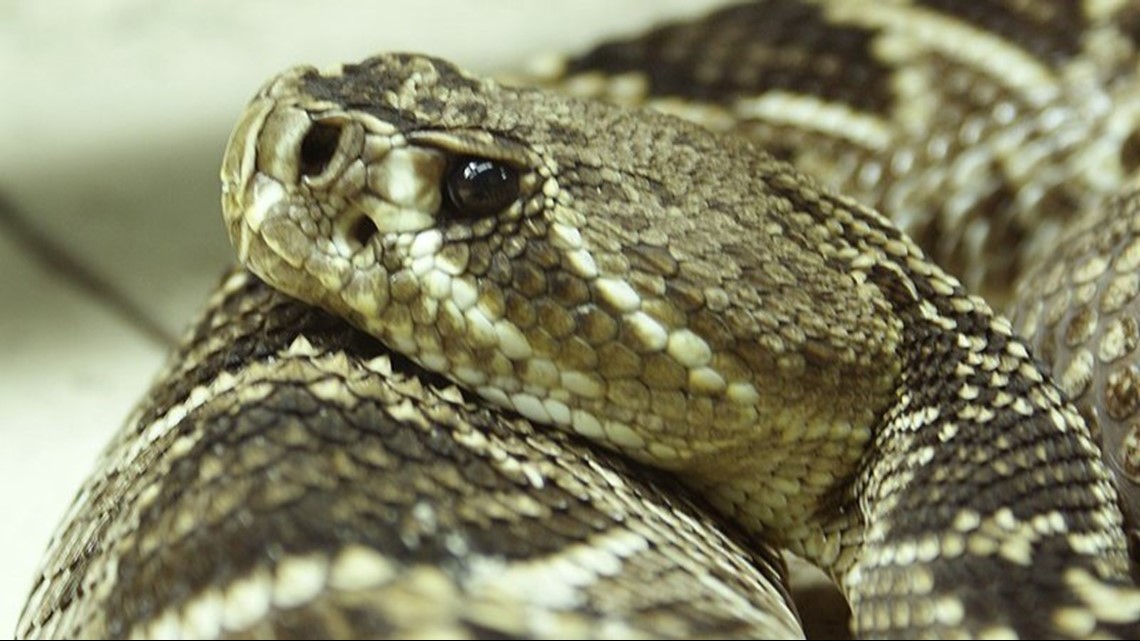
- Largest of the venomous snakes, typically between five and six feet
- Coil up before striking
- Distinctive rattle
- Yellow-bordered, diamond-shaped pattern
- Often found near sandy areas like swamps and pine woods
Coral snake

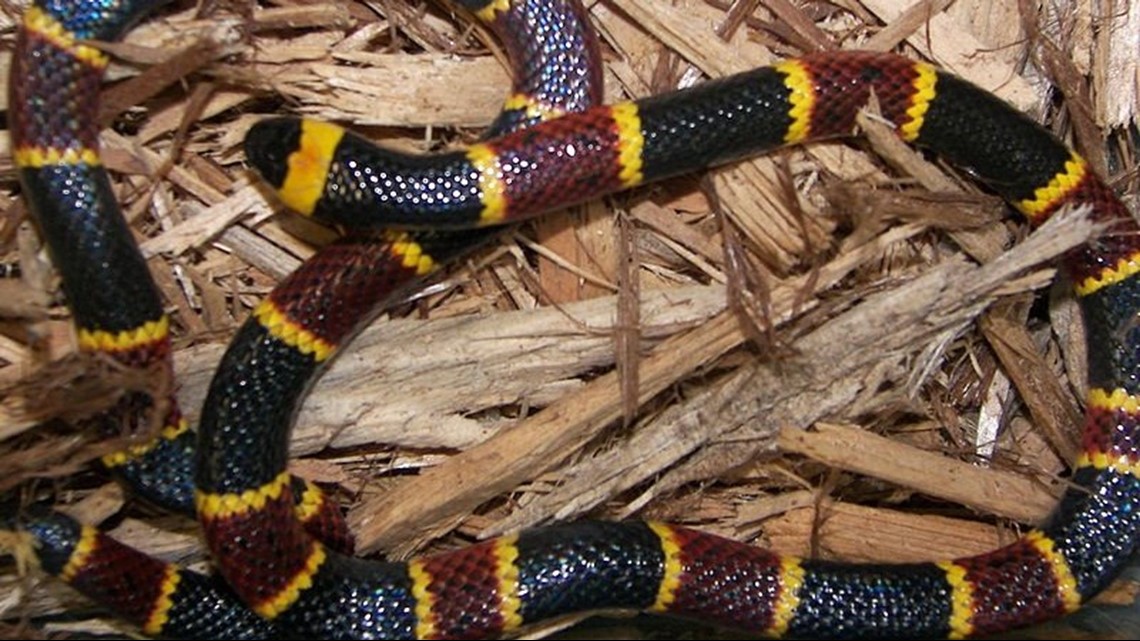
- Red and yellow touching bands(remember the rhyme)
- Thin, like a pencil
- Inject potent venom by "chewing"
- Typically found in upland areas, like brush and pine woods
Copperhead

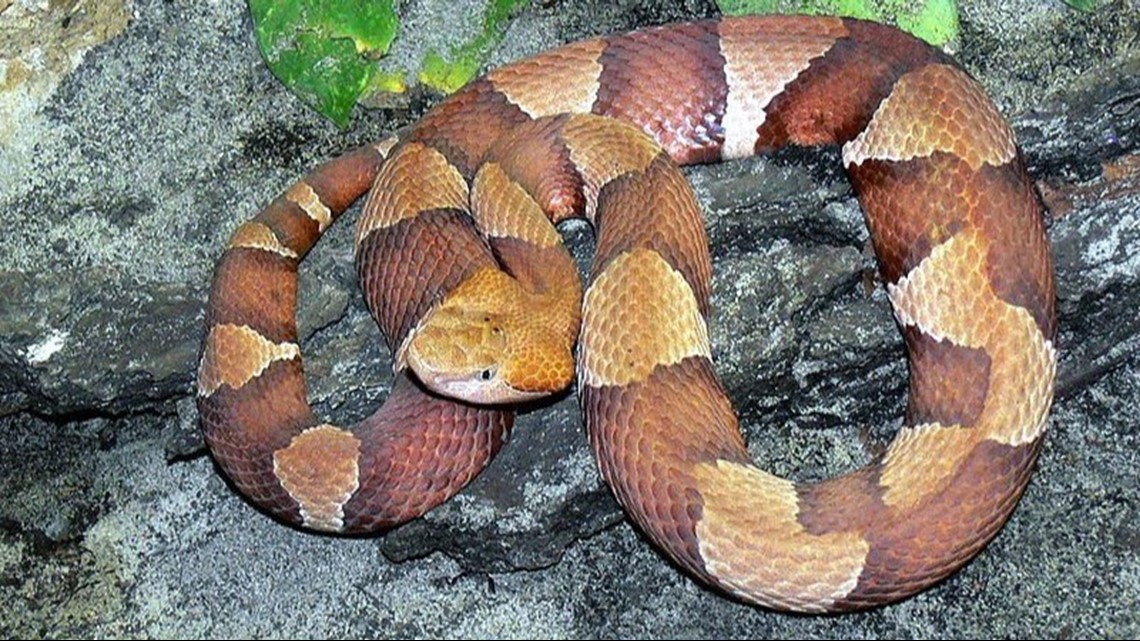
- Reddish tint, district striped pattern
- Typically two to three feet long
- Flattened, pointed head
- More commonly found in the Northwest portion of the state
Timber Rattlesnake

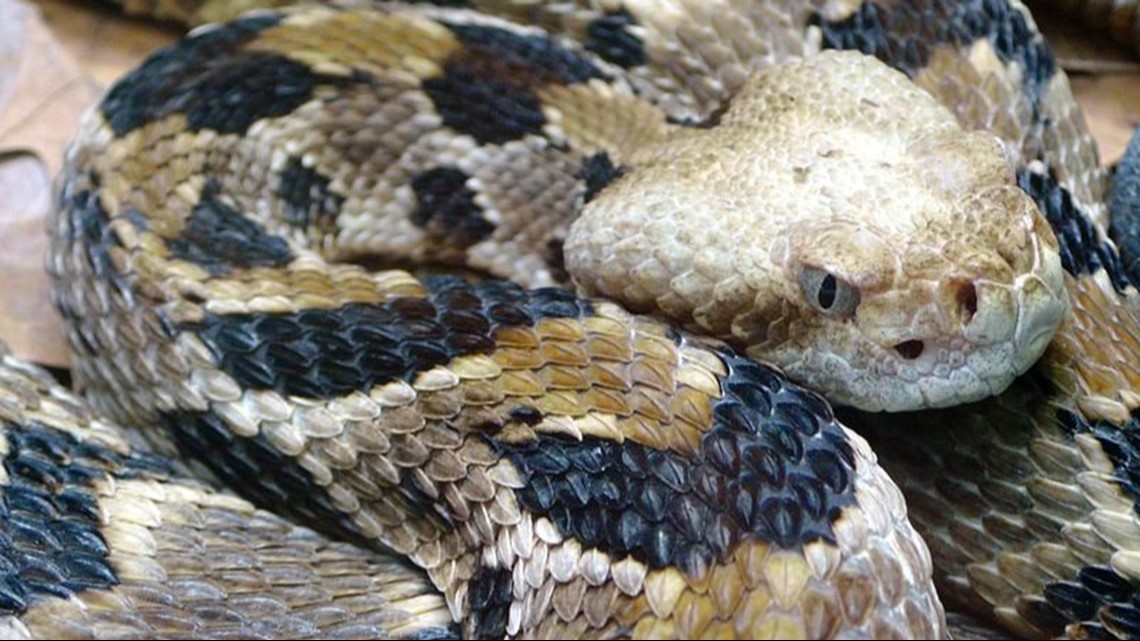
- Also known as canebrake rattlesnake
- Reddish, brown stripe runs down its back, with black chevrons pointing toward tail
- Typically three to five feet
- Not very common in Florida, but found in northeast areas of the state
What to do if you see a snake
The Florida Fish and Wildlife Conservation Commission says to stay calm. We know – easier said than done. But snakes don't intentionally put themselves in a position to scare you and would much rather avoid encounters.
Snakes typically won't bite unless they are provoked, so give them a chance to slither away.
Removing brush, lumber or other debris will help you avoid snakes and rodents. Rodents also feed on things like spilled birdseed and pet food scraps, so if you don't want snakes, get rid of that too.
You can learn more or report a sighting to the Florida Fish and Wildlife Conservation Commission. It also has this tool to help you identify any type of snake in Florida.
If you're bitten by a snake, you can call or send a picture to the Florida Poison Control Center.
- ‘We’re in a plateau’: Scientists warn Florida's COVID-19 cases could increase again soon as data levels out
- Gov. DeSantis lowering vaccine eligibility age to 40 starting Monday, 18 starting April 5
- 2 teens rescued after drifting more than a mile off Florida's coast
- School board fires Florida teacher for medical marijuana use
- Sea turtles may lose protection after end to dredging limits
- Tornado outbreak strikes Alabama, Georgia; at least 5 dead
- Rays 101: Your ultimate guide to jumping on the bandwagon this season
►Breaking news and weather alerts: Get the free 10 Tampa Bay app
►Stay In the Know! Sign up now for the Brightside Blend Newsletter

